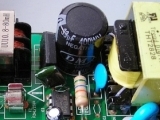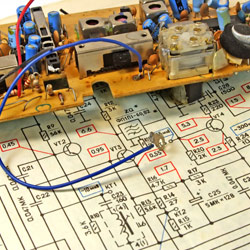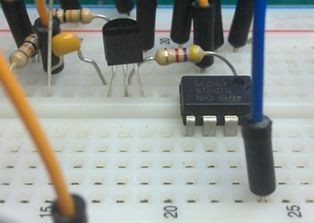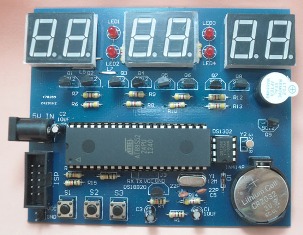Types of electronic devices
Classification of electronic devices, analog electronic devices, electronic digital devices
 Electronic devices are used to transfer, transform and store information. Their work is based on the interactions of charged particles with electromagnetic fields, through which this or that transformation of electricity, serving specific purposes, takes place.
Electronic devices are used to transfer, transform and store information. Their work is based on the interactions of charged particles with electromagnetic fields, through which this or that transformation of electricity, serving specific purposes, takes place.
These devices can, for example, generate or amplify electromagnetic waves, serve as a means of calculation, or be a means of storing information (memory).
The field of application of electronic devices in the modern world is truly unlimited, and almost every modern electrical device has them in its design.
Electronic devices are divided into two classes: analog and digital. Analog devices work with continuously changing signals and digital devices — with signals in digital form, i.e. in the form of discrete pulses, actually with information represented by binary code.
Analog devices are characterized by a continuous change in the signal in accordance with the physical process it describes. In fact, such a signal is a continuous function with an unlimited number of values at different times.
For example: the air temperature changes and the analog signal changes accordingly in the form of a voltage drop, or a pendulum changes its position, performing harmonic oscillations, and the analog signal that is captured will have the form of a sine wave. Here, the electrical signal carries complete information about the process.

Analog devices are simple, reliable and high-speed, which gives them a very wide application, despite the not very high accuracy of signal processing. However, the disadvantages of analog devices include: low noise immunity, strong dependence on external factors (temperature, element aging, external fields), as well as distortion during transmission and low energy efficiency.
Analog devices include:
-
power supply,
-
rectifier,
-
amplifier,
-
comparator,
-
phase inverter,
-
generator,
-
mixer,
-
multivibrator,
-
magnetic amplifier,
-
filter,
-
analog multiplier,
-
analog computer,
-
impedance matching etc.
See also: Anti-aliasing filters and voltage stabilizers

Digital electronic devices work with discrete signals. As a rule, such a digital signal consists of a series of pulses in which there are only two values - «False» or «True» (0 or 1). In principle, digital devices can be implemented on various elements: electromagnetic relays, of transistors, of optoelectronic elements or of microcircuits.
Modern digital circuits are mainly built from logical elements, and can be interconnected by triggers and counters. They have found wide application in automation and robotics systems, measuring instruments, as well as in radio and telecommunication systems.
The digital signal is resistant to interference, easy to process and record, as well as to transmit without distortion, which gives electronic devices on this basis an undeniable advantage over analog devices.
Digital devices include:
-
trigger,
-
logic element,
-
counter,
-
comparator,
-
clock pulse generator,
-
decoder,
-
encoder,
-
multiplexer,
-
demultiplexer,
-
adder,
-
half adder,
-
register
-
arithmetic logic unit,
-
microprocessor,
-
microcomputer,
-
microcontroller,
-
memory etc.
More details on different types of electronic digital devices: Triggers, Comparators and Registers, Pulse counters, encoders, multiplexers 
However, digital devices also have disadvantages: sometimes a digital device has a higher power consumption than an analog device with the corresponding functionality, for example, mobile phones often use a low-power analog interface to amplify and tune radio signals at the base station.
Some digital devices are more expensive than analog devices. It happens that the corruption of only one part of the data recorded digitally leads to the distortion of the entire block of information.
See also on this topic: Analog and digital electronics
